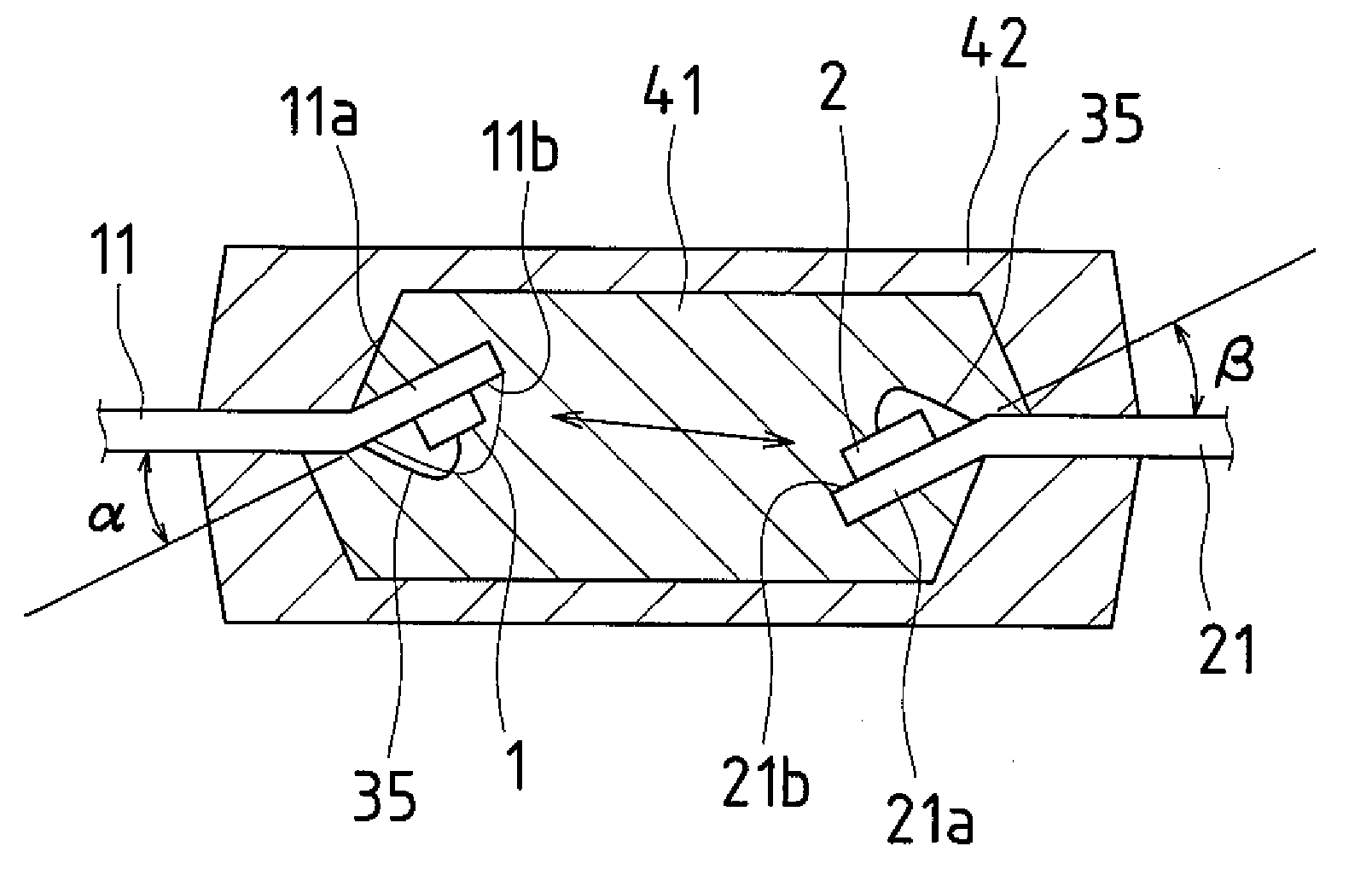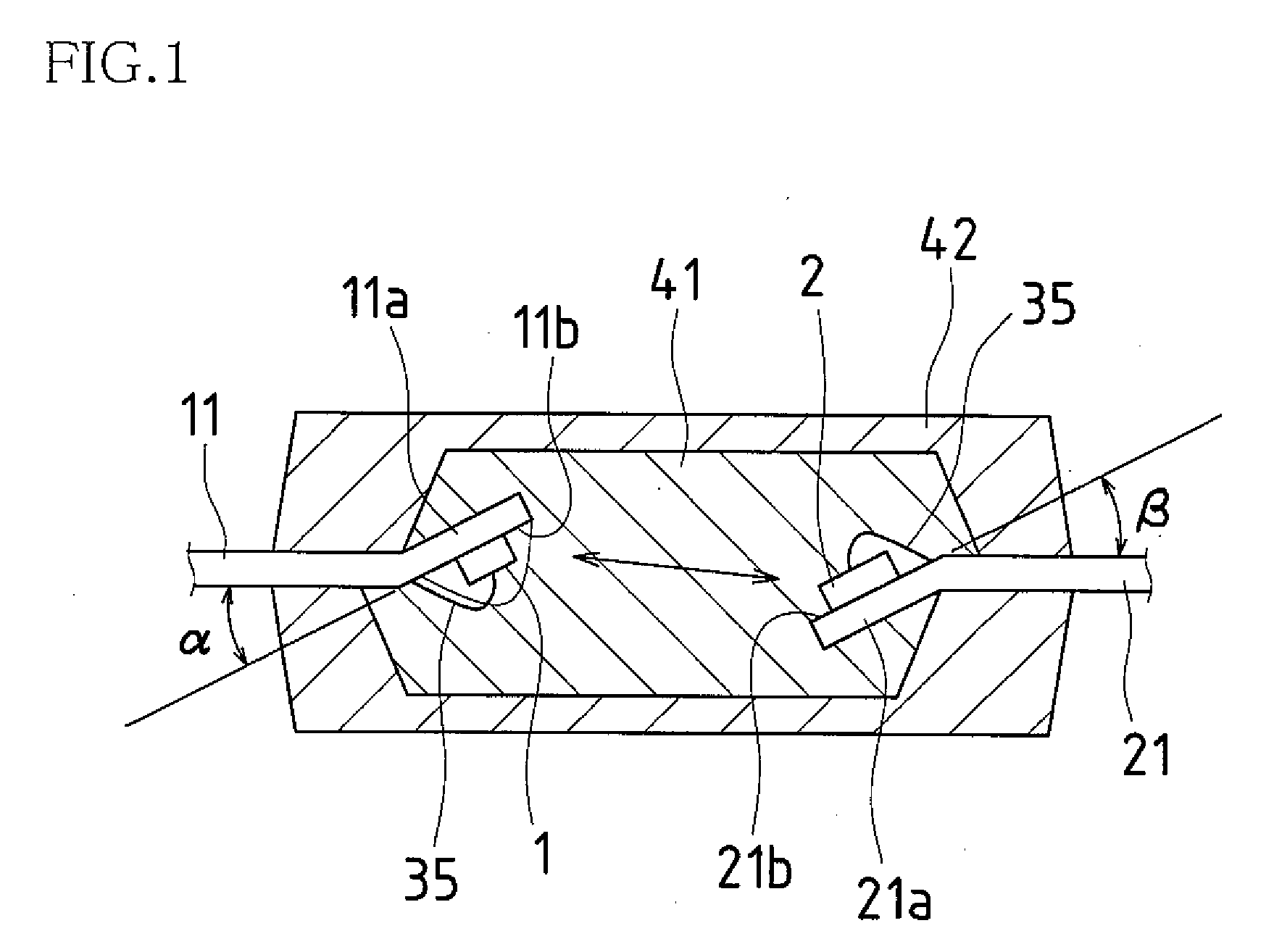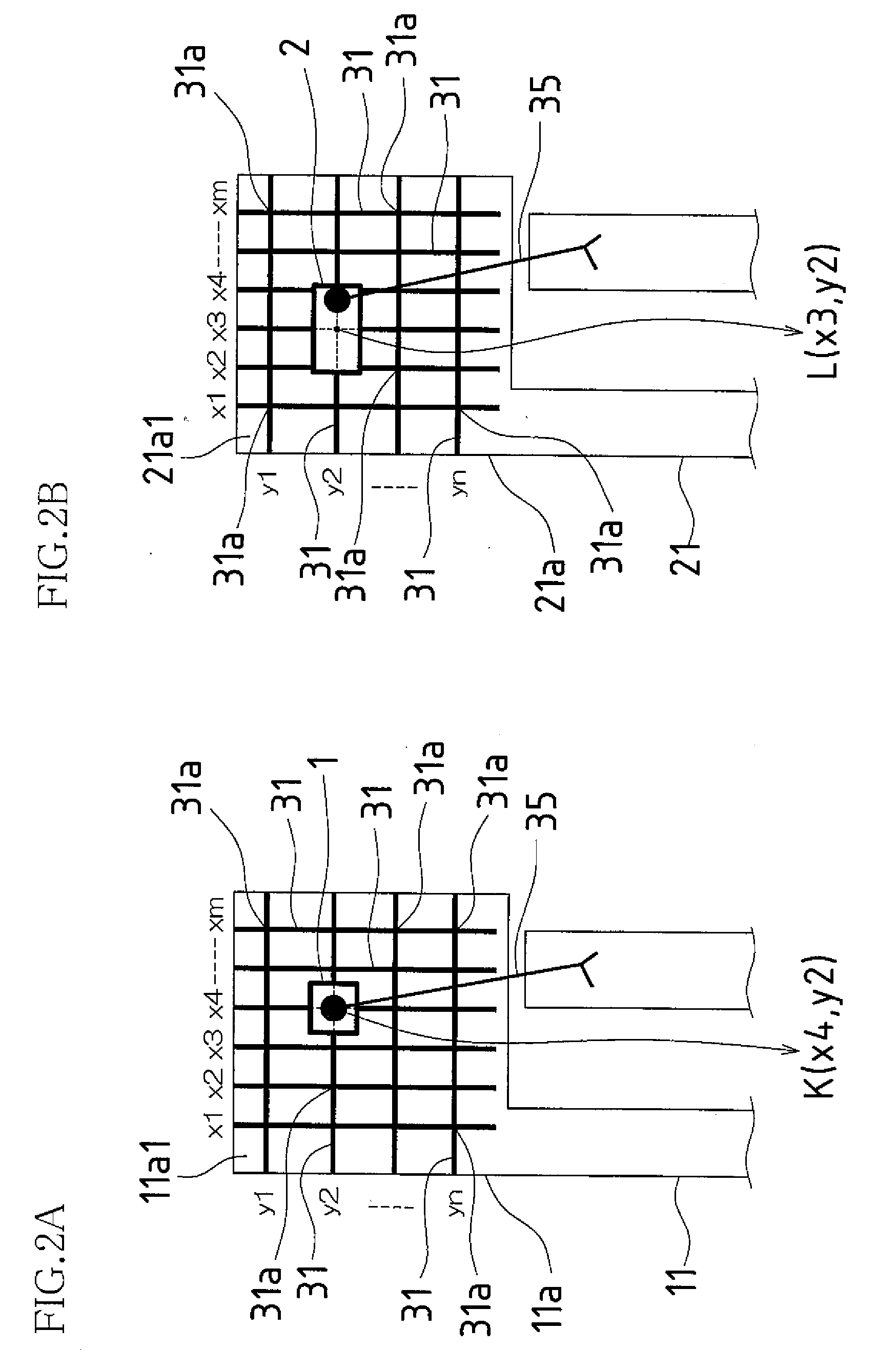Method for producing optical coupling element
a coupling element and optical technology, applied in the direction of semiconductor/solid-state device manufacturing, electrical apparatus, semiconductor devices, etc., can solve the problems of lack of versatility, increased labor and time, and easy variation, so as to reduce the number of components and the inventory, suppress the variation of ctr, and determine accurately
- Summary
- Abstract
- Description
- Claims
- Application Information
AI Technical Summary
Benefits of technology
Problems solved by technology
Method used
Image
Examples
Embodiment Construction
[0024]Hereinafter, an embodiment of the present invention will be described with reference to the accompanying drawings.
[0025]FIG. 1 is a cross-sectional view that shows the structure of an optical coupling element obtained by applying a production method of the present invention. FIG. 2A is a plan view that shows a light-emitting element mounted on the front surface of the header portion of a lead frame for a light-emitting element, and FIG. 2B is a plan view that shows a light-receiving element mounted on the front surface of the header portion of a lead frame for a light-receiving element.
[0026]The optical coupling element of the present embodiment has a structure formed as follows. A light-emitting element 1 is mounted onto a front surface 11b of a header portion 11a of a light-emitting side lead frame 11, and a light-receiving element 2 is mounted onto a front surface 21b of a header portion 21a of a light-receiving side lead frame 21. After that, the light-emitting element 1 a...
PUM
 Login to View More
Login to View More Abstract
Description
Claims
Application Information
 Login to View More
Login to View More - R&D
- Intellectual Property
- Life Sciences
- Materials
- Tech Scout
- Unparalleled Data Quality
- Higher Quality Content
- 60% Fewer Hallucinations
Browse by: Latest US Patents, China's latest patents, Technical Efficacy Thesaurus, Application Domain, Technology Topic, Popular Technical Reports.
© 2025 PatSnap. All rights reserved.Legal|Privacy policy|Modern Slavery Act Transparency Statement|Sitemap|About US| Contact US: help@patsnap.com



